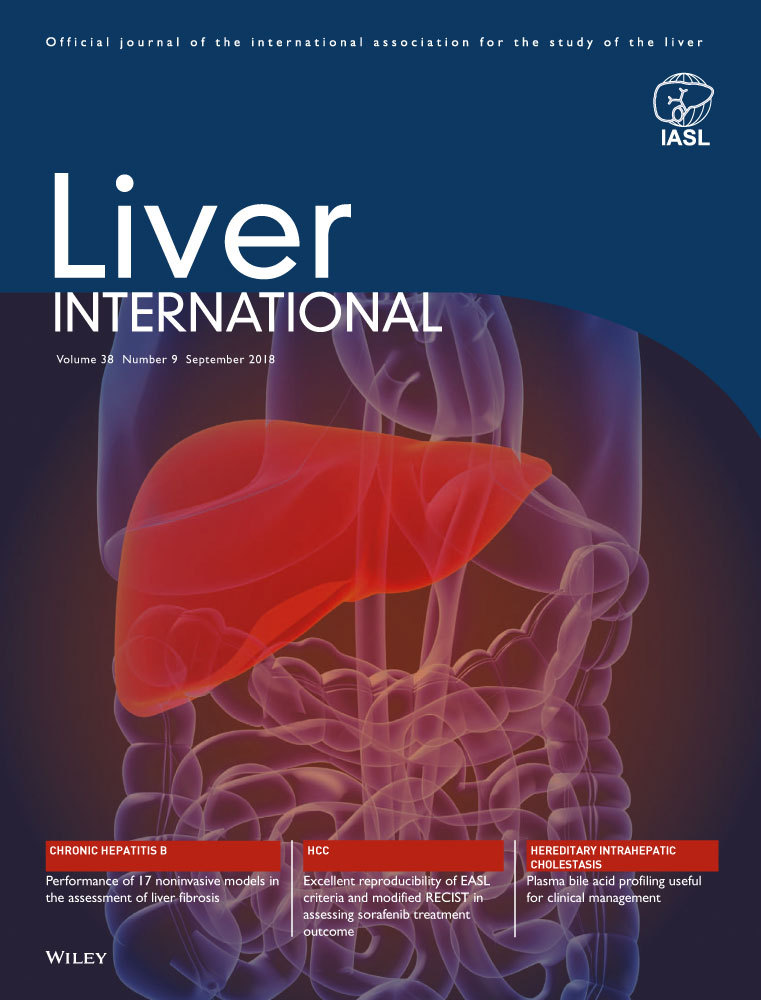Myocardial extracellular volume quantified by magnetic resonance is increased in cirrhosis and related to poor outcome
Funding information
This paper was supported by grants from the Novo Nordisk Foundation, Arvid Nilssons Foundation, and the Capital Region Research Foundation.
Abstract
Background & Aims
The underlying pathogenesis of cirrhotic cardiomyopathy remains unclear. Structural myocardial changes including diffuse fibrosis may be involved and can be accurately assessed by cardiac MRI (CMR) with quantification of the extracellular volume (ECV).This is the first application of this technique in patients with cirrhosis. We aimed to investigate the presence of diffuse myocardial fibrosis and to determine the relation to disease severity, cardiac function and outcome.
Methods
A prospective study including 52 cirrhotic patients and 10 healthy controls. All patients underwent CMR with ECV quantification, tissue Doppler echocardiography, and biochemical assessments. Patients were followed up for a median of 25 months with registration of death and liver transplantation (LT).
Results
Myocardial ECV was higher in the patients compared with healthy controls (31.2 ± 6 vs 27.4 ± 3%, P = .04). Furthermore, ECV increased across the Child Pugh A/B/C classes (26.9 ± 4/31.5 ± 5/34.4 ± 6%, P = .02). Four-teen patients experienced the composite end-point of death/LT during follow-up and these patients had higher ECV (33.2 ± 4 vs 30.4 ± 6%, P = .04). In a univariate Cox regression analysis ECV was associated with poor transplant-free survival (HR 3.6 [1.1-11.6]; P = .03). However, MELD and CRP remained the strongest predictors in a multivariate analysis. ECV correlated with cardiac index (r = 0.44, P = .001), CRP (r = 0.46, P = .001), proANP (r = 0.50, P < .001), and proBNP (r = 0.40, P = .005).
Conclusions
Myocardial ECV is increased in patients with cirrhosis and seems related to disease severity and transplant-free survival. These changes most likely reflect subclinical diffuse myocardial fibrosis and may represent a structural element of cirrhotic cardiomyopathy.
CONFLICT OF INTEREST
The authors do not have any disclosures to report.




